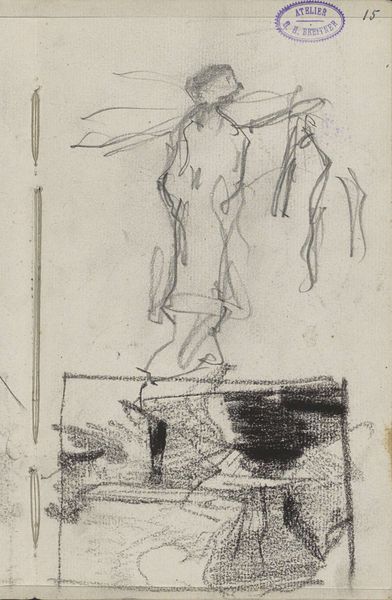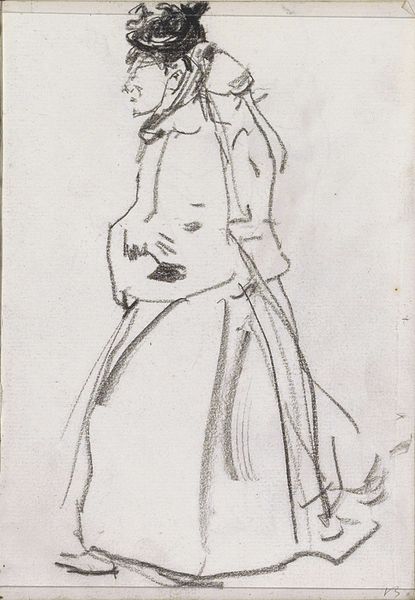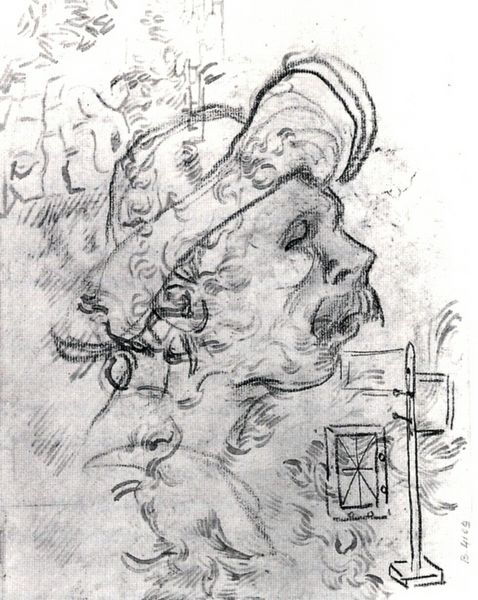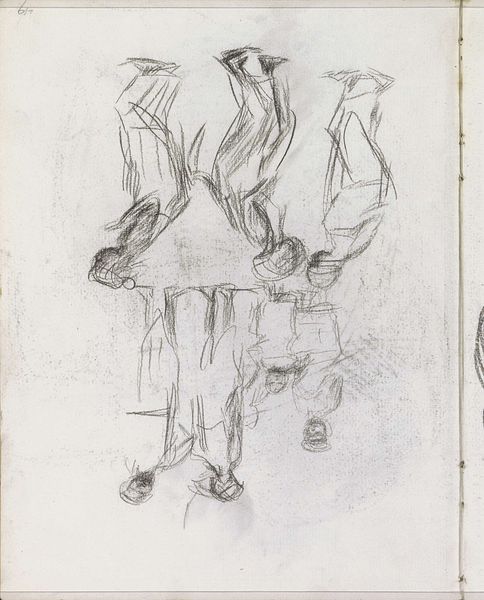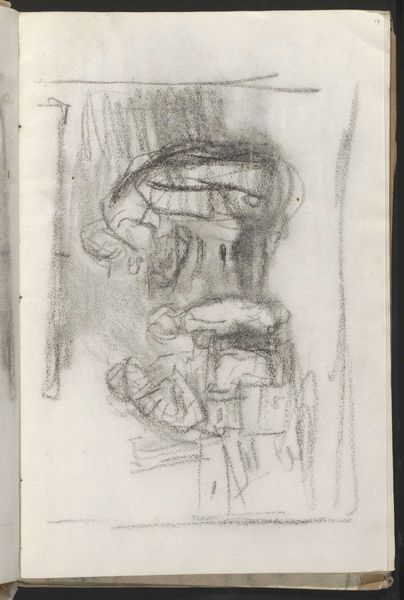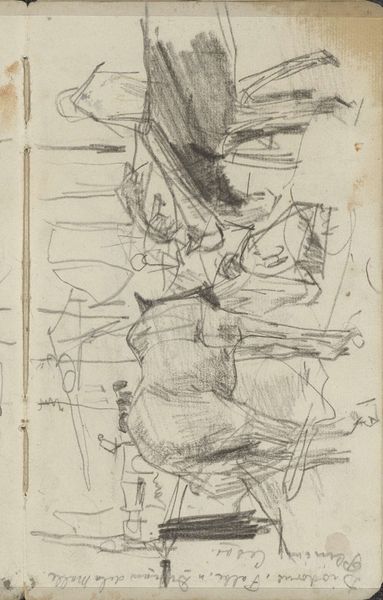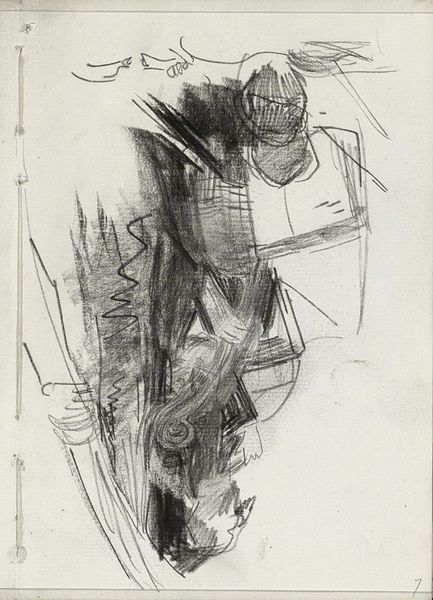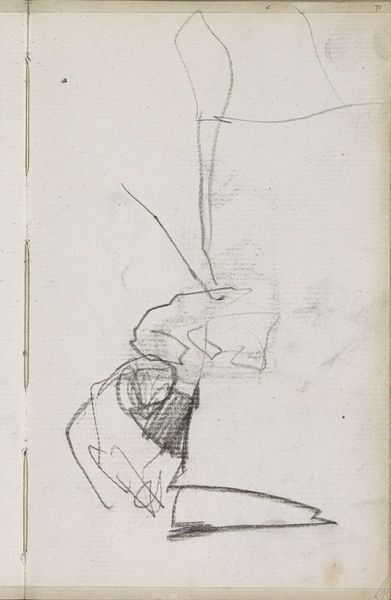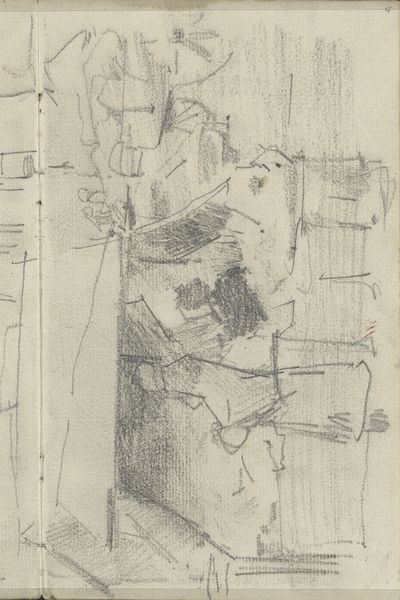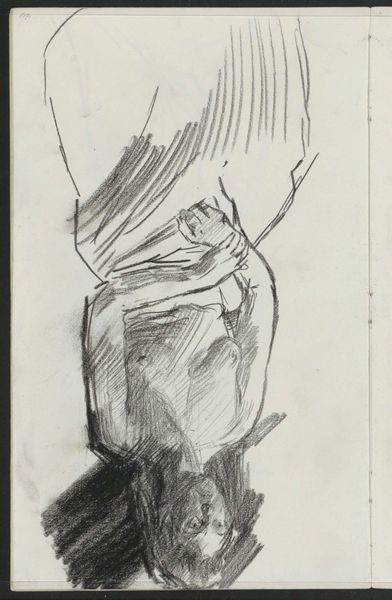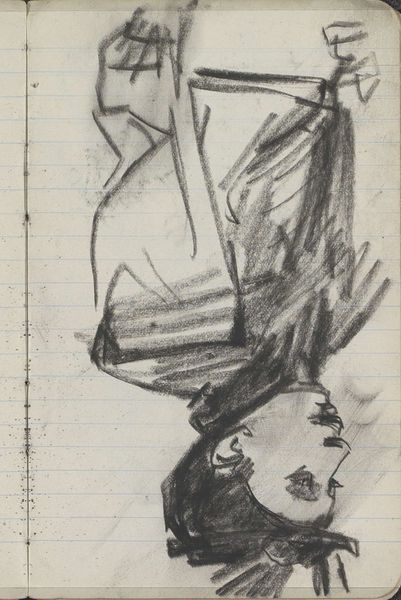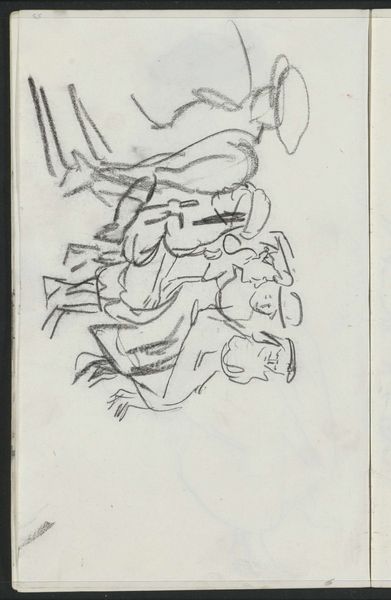
Copyright: Rijks Museum: Open Domain
Curator: I see in this rough sketch by Isaac Israels, dated somewhere between 1875 and 1934, something more than just a preparatory study. I think we should address "Twee vooroverbuigende figuren voor muzikanten" through its very material presence: pencil on paper. What strikes you initially about this work? Editor: The immediacy of it, definitely. You can almost see the artist's hand moving across the page. It feels very intimate, like peering into a private sketchbook. How does the medium itself, just humble pencil on paper, inform our understanding of the piece and perhaps, Israels' larger artistic project? Curator: Precisely! This sketch foregrounds process over finished product, right? Think about the labor involved, the repeated strokes, the pressure applied to create different tones. This isn't about illusionism; it's about the act of seeing and recording. Consider, also, how accessible pencil and paper are compared to oil paints or marble. Editor: That's a good point! Could this accessibility be linked to the subjects he chose - these seemingly ordinary musicians? It seems a world apart from more formally posed, traditional portraits of the time. Curator: Absolutely. The choice of such readily available, relatively inexpensive materials directly connects with a potential democratization of art and artistic subject matter. Who is able to make art? Who is deemed worthy to be represented? What social forces at play could be shaping that? Editor: So, you’re suggesting the medium itself challenges the established hierarchies of art and society by drawing attention to who is making art, who art represents and even the materials themselves. Curator: Exactly. It's about breaking down the idea of "high art" as something rarefied and distant from everyday life. Consider where the work resides now - The Rijksmuseum - what forces brought it there? This unassuming sketch opens a window into a whole network of production, consumption, and ultimately, valuation. Editor: That really shifts my perspective on the drawing. I was initially drawn to the simple elegance of the lines, but I see now that the material reality is much more complex than that. Curator: Yes, thinking about it in those terms opens a wealth of perspectives! Every mark, every smudge, tells a story about art making as work, and the cultural and social forces shaping it.
Comments
No comments
Be the first to comment and join the conversation on the ultimate creative platform.
